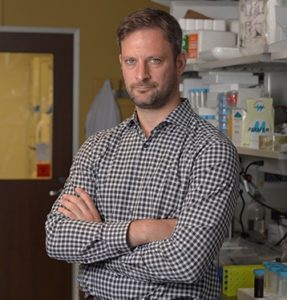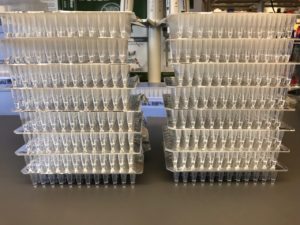
Northwestern Medicine scientists have developed a new high-throughput sequencing tool to test how drugs interact with genetically modified cells, streamlining the currently laborious process of chemical-genetic screening.
This tool, called Quantitative and Multiplexed Analysis of Phenotype by Sequencing (QMAP-Seq), could drastically increase the speed and volume at which scientists can test targeted therapies for diseases such as cancer, according to Marc Mendillo, PhD, assistant professor of Biochemistry and Molecular Genetics and senior author of the study published in Nature Communications.
“We wanted to develop a system where we can turn on and off many different genes, and ask how the presence or absence of each gene impacts drug response,” said Mendillo, who is also a member of the Robert H. Lurie Comprehensive Cancer Center of Northwestern University. “This is a powerful platform to start understanding the genetic determinants of drug response.”
Over the past 20 years, investigators have identified a large catalog of mutations found within cancers. Within each tumor, there may be hundreds of mutations, some that are known to drive tumor formation and cancer growth.
Some of these mutations are the direct targets of pharmaceutical drugs, but the vast majority are uncharacterized. It’s important to learn more about the effects of these mutations, Mendillo said, because even if a patient has one important genetic mutation, they likely have others that could affect the effectiveness of a therapy.

“They have a spectrum of other mutations in the background and we have no idea how each one of those mutations are going to impact therapeutic response,” Mendillo said.
Current screening methods administer drug compounds to populations of cells that are relatively uniform and measure “effectiveness” using metabolic readouts or imaging, but that is simply a rough average of the approximately 500 cells that are grouped together in one well on a screening plate. If scientists want to survey how 50 different mutations impact the effectiveness of a drug, they would need to run 50 different screens — until now.
QMAP-Seq uses different cell lines mixed in together, each engineered with one single genome change. This is paired with a “DNA barcode,” a 20-nucleotide code that is unique to the specific cell line. These pools are subsequently treated with many different drugs and each drug-treated sample incorporates a second DNA barcode, which marks cells by drug.
“Just like you go to Target and there’s a unique barcode on every item, here we have unique snippets of DNA,” Mendillo said.

These “barcodes” not only allow scientists to identify which cell line a cell belongs to and the drug with which it was treated, but they enable methodical counting of the raw numbers of cells that survive. This turns what could be a messy readout into a meaningful indicator of a drug’s effectiveness on a particular cell line.
The investigators tested QMAP-Seq in the current study, treating 60 different cell lines with over 1,400 drug combinations, generating over 86,000 chemical measurements in a single experiment. The proof-of-concept revealed new chemical-genetic interactions between drug compounds and breast cancer cells, according to the study.
This could be used to estimate how drugs may respond to oncogenic profiles unique to each patient, and help further target therapies for diseases with a strong genetic component such as cancer. In addition, the sheer scale of information gathered can help scientists learn more about genes whose function is unknown or partly undefined, according to Mendillo.
“If you screen enough drugs against a gene mutation, you start to get information on what the gene variant is doing biologically,” Mendillo said. “We can start defining that chemical-genetic fingerprint.”
Sonia Brockway, a student in the Driskill Graduate Program in Life Sciences (DGP), was the lead author of the study.
This research was supported by grant CCR17488145 from the Susan G. Komen Foundation, National Cancer Institute grant R00CA175293, the Lynn Sage Cancer Research Foundation, Kimmel Scholar grant SKF-16-135, Lynn Sage Scholar awards and National Institute of General Medical Sciences grant 5T32GM008152-33.






